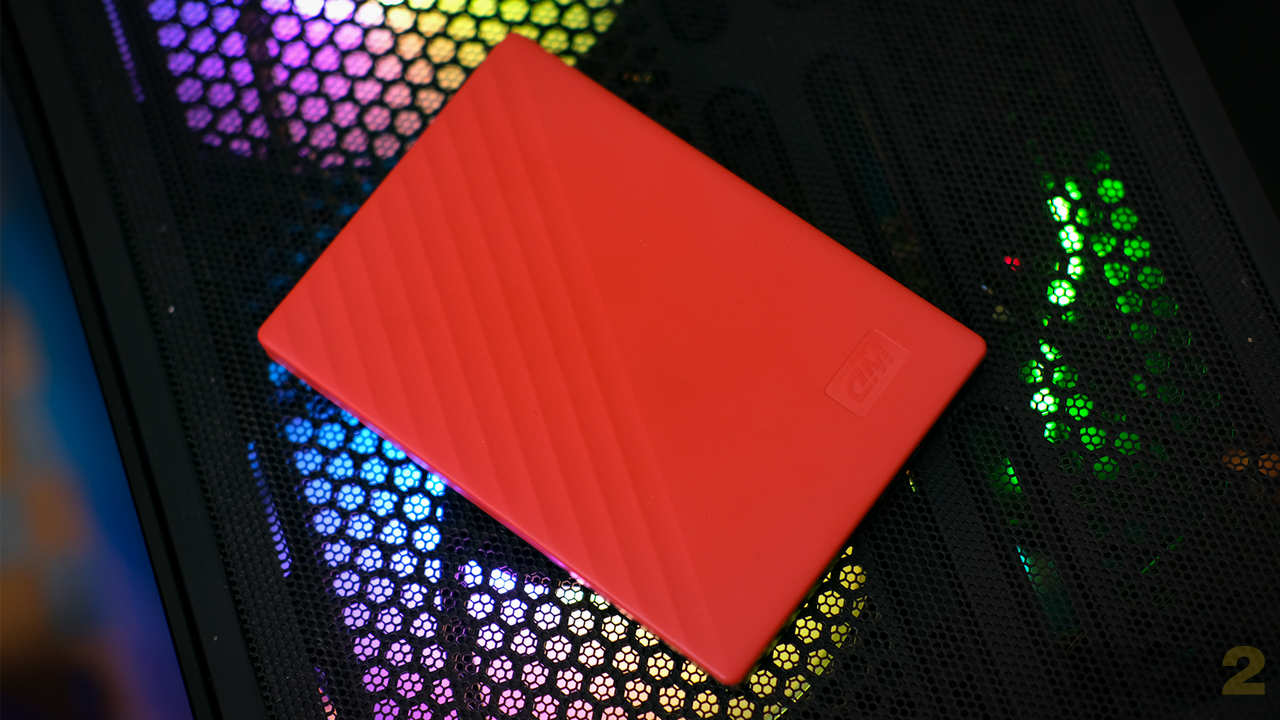I don’t know when manufacturers decided that SMR drives were a good idea for the average consumer, but they did, and it’s very frustrating. SMR or Shingled Magnetic Recording is an efficient data storage technique that results in a higher data density, leading to fewer platters (magnetic disks that store data) and thus, lower costs. But all this comes at a significant reduction in performance. The recently released WD MyPassport HDD ably demonstrates these issues.
This 2.5-inch, 2 TB USB hard drive from Western Digital is noticeably slimmer and lighter than most other 2 TB drives I’ve used, and even some older 1 TB drives. This might seem like a good thing, but I don’t think a few spare millimetres is particularly helpful, and I’d rather have consistent performance than middling speeds.
Speaking of, WD is very careful to not mention speed or SMR on the packaging or store listing of the drive. And with good reason.
While this is a 5,400 rpm drive with a USB 3 interface, I never saw average speeds hitting over 60 MBps. Older, thicker drives that don’t use SMR can easily hit 90-120 MBps.
Earlier, drives stored data the way you imagined they stored data. A magnetic read/write head would glide over a platter and write data in parallel tracks. SMR makes this process more efficient by taking advantage of the fact that data can be read from narrower tracks than it was written on.
Without getting too technical, what happens in SMR drives is that data is divided into blocks. Given how SMR works , even if a small chunk of data in a block has to be rewritten, the entire data block will have to be moved, edited, and then restored. This is a lot of additional work for the drive to perform.
As you can imagine, moving tiny files around an SMR drives can be a nightmare, resulting in extreme performance drops and variations in performance. The performance penalties are so high that users will notice. In fact, WD got into a lot of trouble when it tried to sneak SMR drives into the market, trouble that resulted in the company being forced to come clean and apologise, while also promising more transparency in the kind of tech its drives use.
If I’m transferring a large chunk of files, speeds on the WD MyPassport HDD will hit 90-100 MBps before dropping to 20 MBps every 30 GB or so. HDTune registered a read speed of 243 MBps. CrystalDiskMark registered a speed of 76.54 MBps. PCMark10’s results indicate a bandwidth of 33 MBps. Write speeds can also sometimes drop as low as 10 MBps when moving small files. The results are all over the place, and they just make no sense.
Either way, these speeds are atrocious, but the technology is also part of the reason why you can get 2 TB of storage for just Rs 5,000, and in a package that you can slip into a shirt pocket.
The one saving grace here is that WD isn’t alone in this. Every other HDD maker has done the same, and just about any Rs 5,000 external HDD you buy will perform just as poorly.


)




)
)
)
)
)
)
)
)